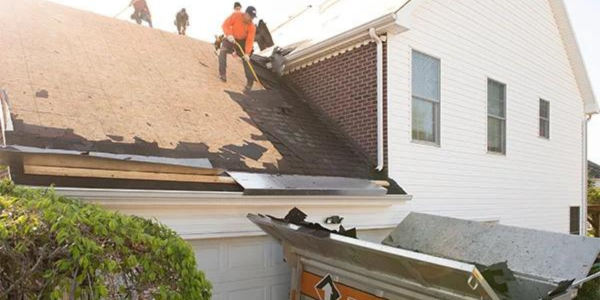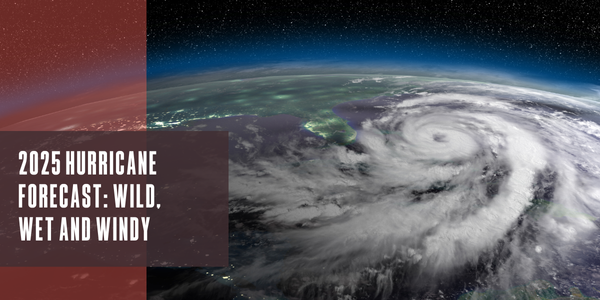Discover hail damage before it destroys the roof

By Equipter.
Learn to identify hail damage on a roof and when it needs to be repaired.
Editor’s note: Share this article with your customers who live in hail-prone areas.
Hailstorms are becoming increasingly common in the spring months. These can produce balls of ice ranging from the size of a pea to the size of a grapefruit. You can imagine the amount of damage a baseball-sized ice projectile can do to a roof. Continued onslaught of hail can cause severe damage to a roof, and it can take hundreds of dollars to repair. Equipter has the information you need to recognize hail damage and determine the best time to get your roof fixed.
Identifying hail damage on a roof is not always simple and can sometimes be mistaken for regular wear and tear. However, some common signs include dents or bruises on the shingles, cracked or missing shingles and granules loosened from the shingles' surface. On metal roofs, hail damage can be more conspicuous as hailstones leave visible dents. Because of this, metal roof hail damage is often easier to pinpoint than damage on other types of roofing materials.
Homeowners may wonder if hail can damage a new roof. The short answer is yes, even new roofs can suffer from hail damage depending on the severity of the hailstorm. Hailstones, due to their high velocity and density, can dent, chip or fracture the shingles on a new roof. Over time, this damage can lead to water leaks or structural damage. Recognizing the signs of hail damage and addressing them promptly can help mitigate further damages and financial implications.
When does a roof need replacement?
Understanding how much hail damage is enough to warrant a roof replacement is essential and depends on several factors, like the size of the hailstones, the age of the roof, the type of roofing materials used and the overall severity of the damage. Hail can puncture asphalt shingles or shatter tiles. A commonly overlooked sign of hail damage is the removal of the protective granule coating on asphalt shingles. This can lead to the exposure and eventual decay of the shingle surface. The protective coating is crucial to reflect UV rays and reduce heat, so any substantial loss can expedite wear and tear, leading to leaks and other issues. Note that hail damage can vary from minor cosmetic issues to major structural threats that mandate immediate roof replacement.
Deciding whether to replace a roof after hail damage should consider the extent of the damage, its age and advice from roofing professionals. To identify the damage, it is recommended to seek professional roof inspection services. Professionals can systematically inspect and document the impact areas accurately, ensuring no hail damage escapes detection. Often, if insurance covers the costs, it makes sense financially to opt for a replacement if the damage is significant. Prolonging roof replacement may lead to further structural damage and insurance may not cover those damages.
Effective handling of hail damage involves a keen understanding of identifying signs of damage, knowing when to rope in professionals, understanding your insurance coverage and acting promptly to prevent further damage. It’s always better to err on the side of caution when it comes to the integrity of your home's roof.
Insurance claims for hail damage
Hail damage poses a significant concern for many homeowners, often leading to stressful situations with the complexities of insurance claims and repairs. There's no denying that insurance claims can feel like a labyrinth. Here's a simplified overview: after a hailstorm, a homeowner reports the incident to the insurer and initializes the claim. A claims adjuster then inspects the property to evaluate the extent of the damage. Once validated, the insurer proposes a settlement estimate, reimbursing the policyholder.
Of course, it isn't always so straightforward. Engaging in inspection negotiations is often necessary when dealing with insurance adjusters on hail damage. A seasoned adjuster might downplay the overall expenses or underappreciate the severity of destruction incurred. Homeowners, therefore, need to be prepared with an inclusive, detailed record of damages, equipped with photographs and repair estimates from independent professionals. Meeting with the assigned insurance adjuster for a thorough roof inspection and submitting all the relevant documents such as photos, sample materials and a written estimate from a licensed roof contractor, are all recommended for a successful insurance claim.
Once you have the damage documents, you can begin the process of filing an insurance claim. The amount paid out by insurance companies for hail damage claims varies significantly based on the insurer, policy, deductible and the extent of the damage. Many times, homeowners' insurance coverage will often cover the costs associated with repairing or replacing a roof due to hail damage. With insightful understanding and proactive damage identification, homeowners can navigate the storm, quite literally, ensuring their homes quickly get back into shape.
Equipter and professional roof repair
Roofing crews across North America depend on the Equipter 4000 to maintain clean job sites and spend less time on the roof. The Equipter 4000 is a self-propelled trailer with a box that can deliver materials to a roof and can also gather debris, protecting lawns from shingles and nails. The Equipter can be towed away when the job is complete and, unlike rollaway dumpsters, the Equipter 4000 is easy on lawns and won’t leave deep cuts into driveways. When you are looking for the right roofing company to repair a roof after a hailstorm, inquire if they use the Equipter 4000 on their jobs.
Original article source: Equipter
Learn more about Equipter in their Coffee Shop Directory or visit www.equipter.com.





















Comments
Leave a Reply
Have an account? Login to leave a comment!
Sign In